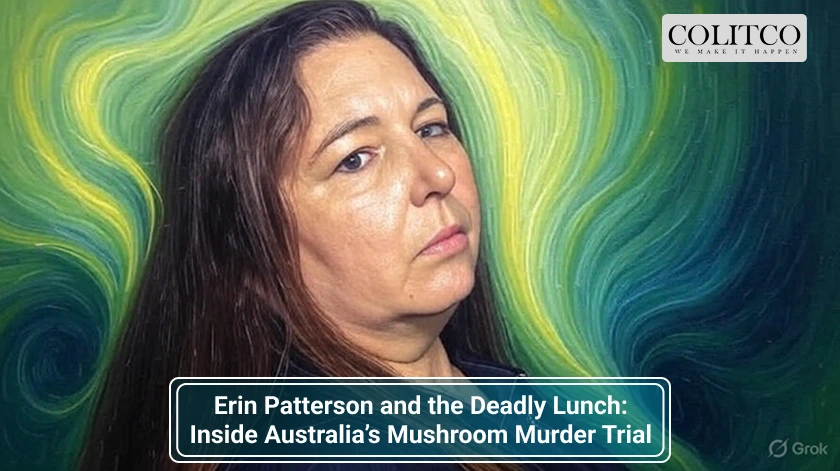A Deadly Lunch in Leongatha
On a crisp winter afternoon in Leongatha, nestled in Victoria’s picturesque South Gippsland region, Erin Patterson hosted what would become one of Australia’s most shocking family meals. The date was July 29, 2023. With her two-storey home surrounded by gum trees and native flora, Erin envisioned this place as her “forever home,” a haven where her children could return for years to come. But on this day, that home became the epicentre of the now-infamous mushroom case.
Erin Patterson, 50, had extended a surprising invitation to her estranged in-laws, Don and Gail Patterson, and Gail’s sister, Heather Wilkinson, along with her husband, Ian. Erin’s former husband, Simon Patterson, had been invited but opted out the night before, saying he felt “too uncomfortable.” Their children, a nine-year-old daughter and a 14-year-old son, stayed away as well, spending the day at the local cinema with a friend after grabbing food at Leongatha McDonald’s.

Clockwise from top left: Heather Wilkinson, Erin’s estranged husband’s aunt (murdered); Ian Wilkinson (survived); and Erin’s estranged husband’s parents, Don and Gail Patterson (both murdered). [Image collected from Herald Sun]
The guests arrived with warm smiles and gifts, an orange cake from Gail and a fruit platter from Heather. None of them could have foreseen that this lunch would be their last meal together.
A Dish Meant to Impress
The lunch menu was anything but ordinary. Erin had chosen beef Wellington — a dish described by Gordon Ramsay as the “ultimate indulgence.” Inspired by a recipe from Nagi Maehashi’s cookbook Dinner, Erin meticulously crafted the meal over hours, using eye fillet steaks instead of a single beef tenderloin to create individual portions.
She skipped the prosciutto out of respect for Don’s dietary preferences and replaced the egg crepe with filo pastry. The duxelles — a mushroom paste — called for portobellos, but Erin used pre-sliced button mushrooms. To enhance the flavour, she added dried mushrooms from a Tupperware container in her pantry. She later claimed that this mix may have included foraged mushrooms by accident.
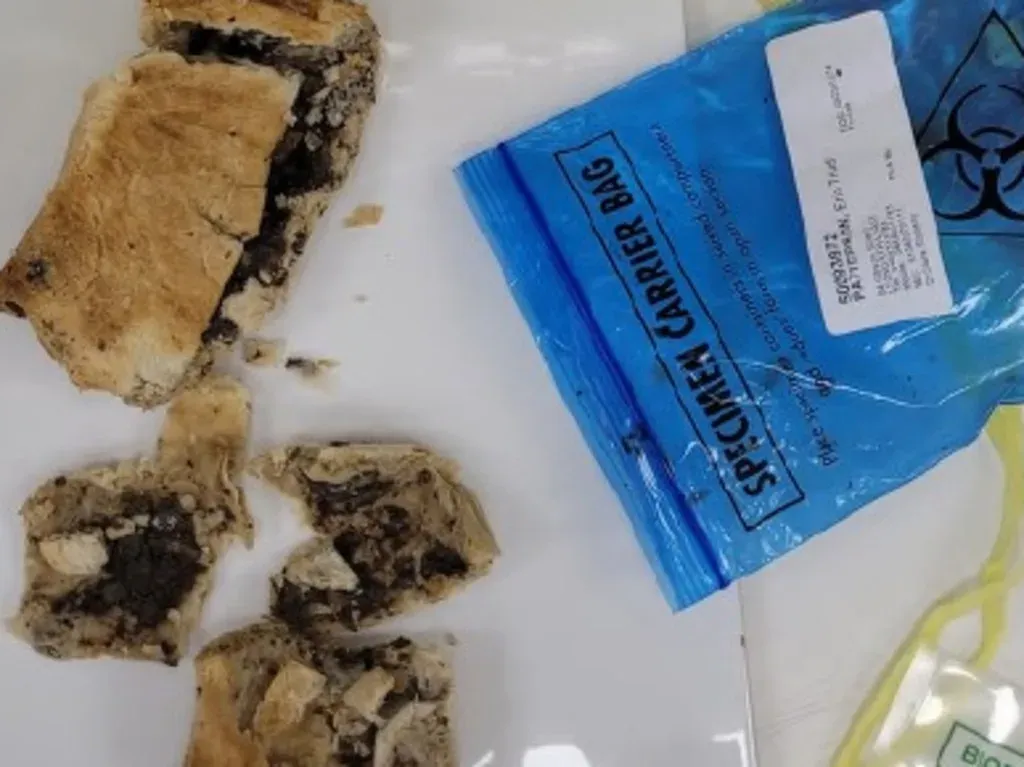
Leftover mushroom lunch retrieved from Erin Patterson’s residence. [Image: Supplied/Yahoo]
Erin served each guest a beef Wellington parcel, mashed potatoes and green beans. According to survivor Ian Wilkinson, Erin dished up the meals on four large grey plates, but used a smaller, orange-tan plate for herself — a detail the prosecution later called “striking.” Erin denied using a different plate and claimed not to own any such crockery.
After the meal, Erin shocked her guests by telling them she had cancer. She later admitted at trial that it wasn’t true — she fabricated the story to justify upcoming weight-loss surgery. Her guests prayed for her, then left, unaware they had eaten a dish laced with deadly toxins.
Sudden Illness Strikes
That night, Heather Wilkinson praised the delicious beef Wellington during a phone call with friends. But the appreciation turned to horror when she and Ian began violently vomiting in the middle of the night. Simultaneously, Don and Gail Patterson were suffering similar symptoms. By morning, all four had been hospitalised with suspected gastroenteritis.
Only Ian Wilkinson survived. He spent weeks in hospital and required a liver transplant. Don, Gail, and Heather all died. Toxicology confirmed the presence of Amanita phalloides — death cap mushrooms — among the lunch leftovers retrieved from Erin Patterson’s red-lidded outdoor bin.
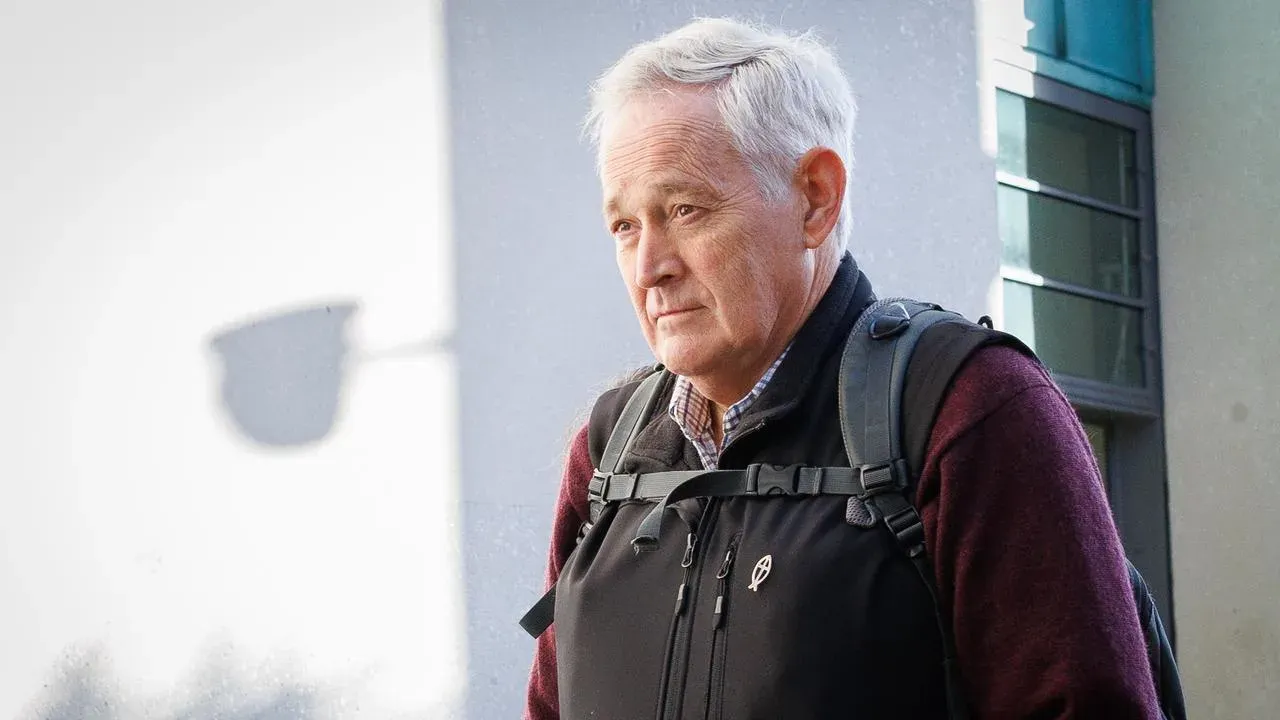
The lone survivor of the lunch, Ian Wilkinson. [Credit: NewsWire / Nadir Kinani]
Erin presented herself at Leongatha Hospital, reportedly complaining of gastrointestinal symptoms. However, CCTV footage later showed she refused to be admitted and discharged herself. This sparked more suspicion.
Police launched a full investigation, scouring her Leongatha home. They found a variety of plates that didn’t match Erin’s description during testimony — including a multi-coloured plate. Images of the kitchen, table setting, and pantry became exhibits in what would be a marathon trial.
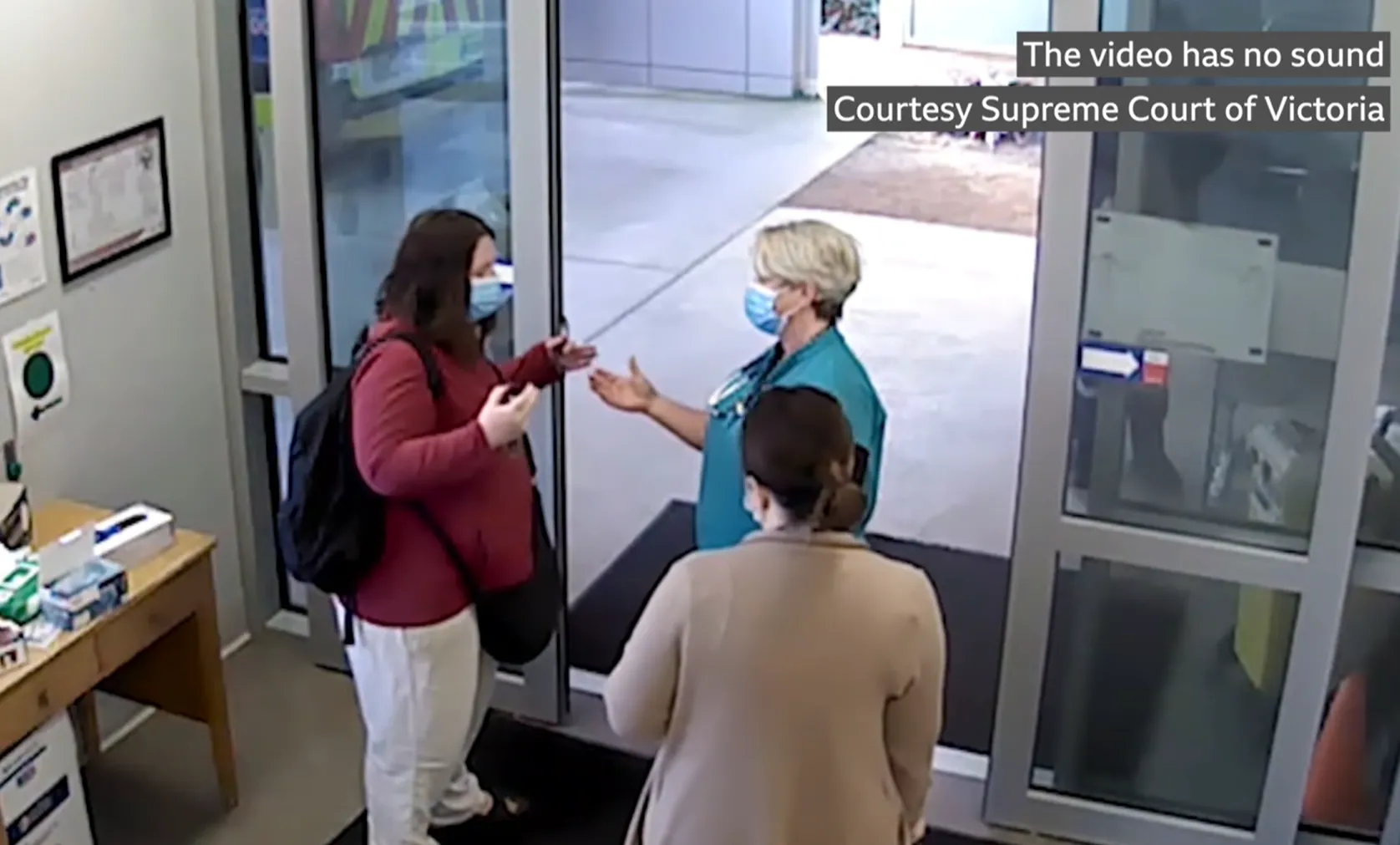
CCTV footage reveals Erin Patterson arrived at Leongatha Hospital but declined to be admitted.
Medical investigations confirmed the victims had ingested Amanita phalloides, better known as death cap mushrooms, one of the world’s deadliest fungi. The public wanted answers. Did Erin intentionally poison her guests, or was it a horrific mistake?
Public Obsession and a Shakespearean Twist
As the mushroom case unravelled, it gripped not just Victoria but all of Australia. Many dubbed it the Mushroom Lady Verdict trial. Media outlets dissected every detail, from Erin Patterson’s behaviour to the decor of her Leongatha home.
What fed this obsession? The contrast was too intriguing to ignore — a domestic lunch, an everyday dish like beef Wellington, and an alleged poisoning. Erin, 50 at the time, came across as your average woman. Yet behind that façade, police and prosecutors began to uncover an unsettling series of events that would lead to the mushroom case verdict.

Erin Patterson [Image credit: AFP/Martin Keep]
The rural setting of Leongatha only amplified the story’s mystery. It challenged long-held assumptions that small towns are inherently safer than cities. In fact, research from the Australian Institute of Health and Welfare has shown that serious assaults and even murder rates are significantly higher in rural and remote areas.
Erin Patterson’s Strange Behaviour
What raised eyebrows early in the investigation was Erin Patterson’s odd and evasive behaviour after the fatal lunch. She lied to police about foraging mushrooms and even about owning a dehydrator. But CCTV footage showed her dumping a Sunbeam dehydrator at Koonwarra Transfer Station just days after the lunch. That dehydrator later tested positive for toxins from death cap mushrooms.
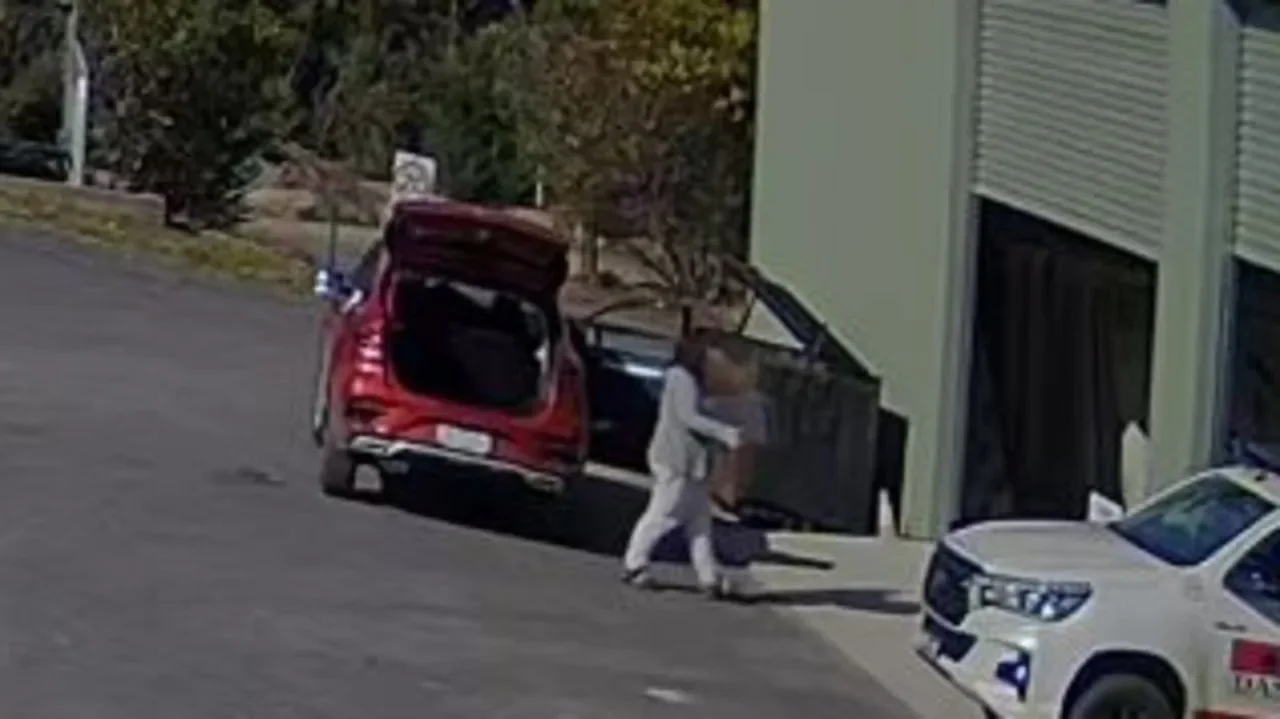
CCTV stills show Erin Patterson, known as the mushroom cook, discarding the dehydrator at Koonawarra Transfer Station. [Image: Supplied by the Court]
She used multiple mobile phones, one of which underwent factory resets—one reset occurred even after police had seized the device. Erin also served herself the same beef Wellington on a different-coloured plate than her guests. Survivor Ian Wilkinson recalled her plate being “orangey-tan,” while the others ate from grey ones. Prosecutors considered this “striking” evidence, suggesting premeditation. Erin denied owning such plates, but police found several coloured plates in her home.
The Lunch, Leftovers, and Diary Entries
The lunch itself became a crucial focal point in the mushroom trial. Investigators found leftovers of the beef Wellington in Erin Patterson’s bin two days after the incident. The mushrooms inside the parcels were finely chopped. A toxicologist confirmed the presence of lethal mushroom toxins.
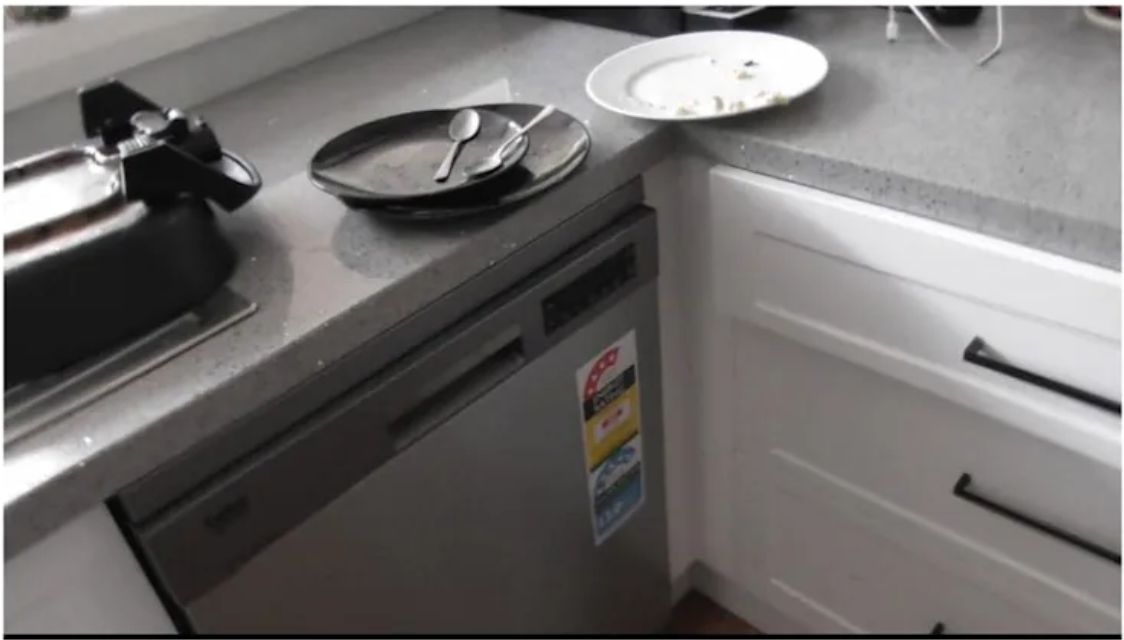
Police presented evidence showing they had conducted a search of Erin Patterson’s kitchen. [Image: Supplied by the Court/Yahoo]
Erin claimed she gave the sixth Wellington portion — meant possibly for her husband Simon if he had attended — to her children, scraping off the mushrooms and pastry. Toxic traces were still found in the beef remnants.
Adding a deeply personal element to the mushroom case, Gail Patterson had recorded the lunch in her diary with the note: “Lunch at Erin’s w Heather + Ian.” Gail had long been described as a loving and attentive figure in Erin’s life, even helping during her early motherhood. This simple diary entry now forms part of the tragic timeline.
The Erin Patterson Trial: Nine Weeks of Testimony
The Erin Patterson trial lasted nine weeks and included over 50 witnesses. Prosecutors argued that Patterson knowingly served beef Wellington laced with death cap mushrooms. The circumstantial evidence was vast — lies to medical professionals, suspicious tech behaviour, disposal of key evidence, and the telling plate discrepancy.
The jury heard that she had no clear motive but noted her string of lies, including a false cancer claim to encourage guests to attend the lunch. Patterson’s supporters, including friend Ali Rose Prior, remained by her side. After the verdict, Ali said, “I didn’t have any expectations… it has to be what it is,” confirming she would visit Erin at Dame Phyllis Frost Centre, where she was taken after the trial.
Erin Patterson, who turned 50 in 2023, pleaded not guilty throughout. She claimed she ate the same beef Wellington and vomited soon after. However, prosecutors dismissed this, given her pattern of misleading behaviour and the level of detail surrounding the preparation of the meal.
The Mushroom Verdict and Sentencing
On 7 July 2025, the jury returned a unanimous verdict: guilty on three counts of murder and one of attempted murder. This mushroom verdict rocked Australia and prompted global headlines. The Erin Patterson verdict update confirmed what many had feared — this was not a tragic mistake but a calculated act.
Victoria’s Supreme Court released numerous pieces of evidence that helped secure the conviction, including the CCTV footage, mobile phone records, and toxicology reports. Erin showed no emotion as the jury read the verdicts. She now awaits her sentencing.
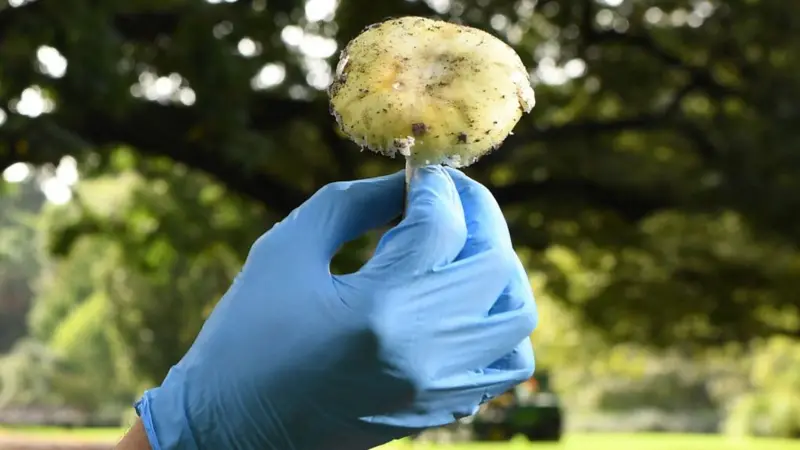
The Death Cap Mushroom [Credit: Getty Images]
Life Behind Bars at Dame Phyllis Frost
Erin Patterson now spends her days in custody at the Dame Phyllis Frost Centre, a maximum-security women’s prison in Melbourne. While the final Erin Patterson sentence is yet to be determined, she faces life imprisonment — a sentence fitting for one of the most chilling mushroom murder cases in Australian history.
Her children remain a point of speculation. People are repeatedly curious about, “How old are Erin Patterson’s children?” and “What are Erin Patterson’s children’s ages?” In court, she mentioned feeding her two children the leftovers. At the time of the murders, her daughter was nine and her son was 14 years old.
Despite the public scrutiny, authorities have urged respect for the victims’ families and Erin Patterson’s children. Detective Dean Thomas reminded the media, “Three people have died, and one nearly did. Let’s not forget them.”

In 2001, Erin Scutter was part of the Air Services trainee air traffic controllers class. She was one of the few who successfully completed the demanding training program. [ABC News/Supplied]
The Question That Still Haunts: Why Did Erin Patterson Do It?
After months of evidence and global headlines, one question still lingers: Why did Erin Patterson do it? Without a clear motive, theories range from revenge, mental health issues, or a family dispute gone too far. The court may never fully answer this question.
The mushroom killer verdict has given some closure to the families and the public. But it also leaves an unsettling legacy. The trial has sparked discussions about food safety, domestic violence, and the trust we place in those closest to us.
Also Read: ‘Mushroom Murder’ Trial: Erin Patterson Found Guilty of Poisoning Guests with Death Cap Mushrooms
Also Read: NAIDOC Week 2025 Celebrates Strength, Vision and Legacy: Full List of Winners
Conclusion
The Erin Patterson mushroom case is unlike anything Australia has seen in recent years. What began as a quiet lunch in Leongatha ended with three lives lost, one forever changed, and a nation captivated. The Erin Patterson verdict update has provided legal closure, but the emotional aftermath continues.
The case has become a grim reminder of how quickly the ordinary can turn fatal, and how secrets, even when buried beneath layers of beef Wellington, will eventually come to light.
As Erin Patterson awaits sentencing, Australians continue to ask: How long is Erin Patterson in jail for? What will become of her children? And what could drive someone to commit such an act?
Only time will tell. But the mushroom trial will be remembered as one of the most haunting chapters in Australian criminal history.

